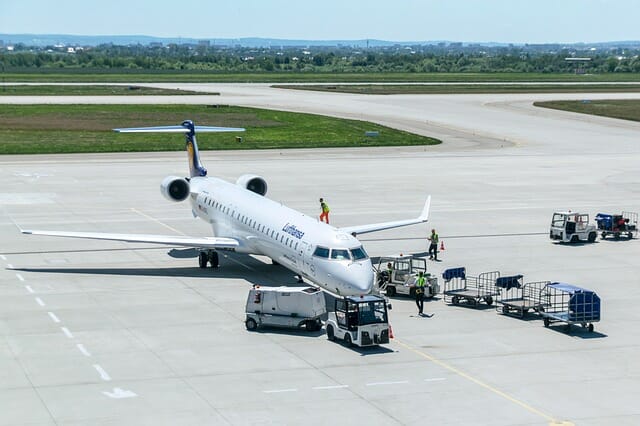The thought of flying with your middle school, high school, or university marching band can be a bit overwhelming at first, but once you do a bit of research and find out the ins and outs of transporting your instrument via air, it's honestly not too complicated!
The main question you have will undoubtedly be this: can I bring my instrument as carry on, or do I need to check it. Then you're probably asking if I check it, how much will it cost me?
Well, we've done all the research for you, and while we'd like to give you a good general answer to these questions, the truth is all airlines are different. Each airline has specific carry on dimensions, checked baggage rules, and even seat baggage options.
Check out the chart below for each different airline's rules, and be sure to read over our basic tips below as well!

Airport Pixabay Public Domain
Here are a few basic tips:
- Plan for being screened by the TSA (physical inspection) regardless of your instrument size/situation. It's always best to be prepared. You will need to instruct them beforehand of any special care with your instrument and pieces/tools.
- Check aircraft carry on, personal items, and checked bag weight limits and fees. (See chart below).
- Try to book nonstop flights, as this will allow you to avoid the hassle of moving checked instruments from one gate to another.
- Try to book your flight on a less busy day, such as a Tuesday, Wednesday, Thursday, or Sunday morning. This will allow you to have more leeway with overhead storage space and extra seats with your instruments.
- Know the law: check out the Contract of Carriage for your airline and the official Carriage of Musical Instruments Statement from DOT for details about your rights with musical instruments aboard aircraft. To avoid conflict, consider printing these rules out and bringing them, as the crew may not be familiar with them.
- Mark necessary instruments fragile, ensure they are properly padded and secured inside the case, and address both the inside and outside of the case.
- Know your options with 'seat baggage'. Each airline is different (see chart below), but essentially there are typically options for buying an additional seat for larger instruments, each airline with its own conditions to the situation. For example, Southwest has this statement regarding seat baggage:
- The instrument must fit in the seat without blocking aircraft signage and be secured with a seatbelt.
- The instrument must be placed in the first row and in a seat closer to the window than any other Customer in that row.
- Reservations must be made and a ticket must be purchased at a charge no greater than the Child's Fare. Musical instruments cannot be transported in place of a free companion under any fare promotion.
This is a good general example of MOST airlines instrument policy:
As part of the allowance of one carry-on bag plus one personal item, a passenger may carry a violin, guitar or other small musical instrument on board the aircraft if:
The instrument can be stowed in the overhead bin or under the seat in front of the passenger; and
There is space for storage at the time when the passenger boards the aircraft
Musical instruments transported on board United and United Express aircraft must be in hard-shell cases. - Example from United Airlines
Tips for Traveling with a Marching Band








